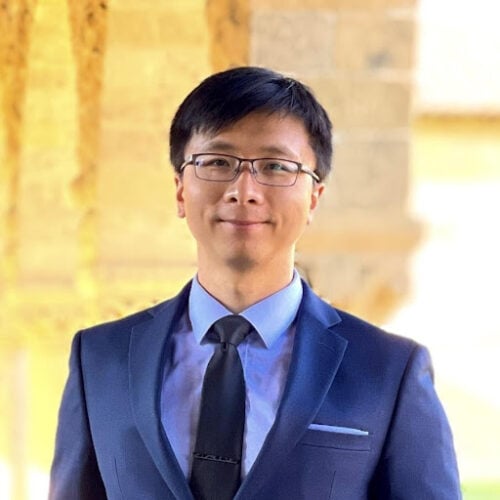How did you get into pain science? Did you always know it was what you wanted to do, or did you start somewhere else?
My interest in pain medicine started in medical school when I witnessed the profound impact of pathological pain on patients. This interest has evolved during my PhD and residency training, where I not only study the fundamental circuits that govern pain modulation in acute and chronic pain, but also experience great satisfactions while taking part in interventions to treat complex clinical pain. These experiences play a paramount role in my decision to pursue fellowship training in pain medicine and continue to conduct translational research on pain as a physician-scientist. I hope my work can help advance our understanding on the neurobiology and pharmacology of clinically significant pain conditions.
What topics does your current research/ clinical practice cover? How does this affect the public?
My research focuses on understanding the plasticity in pain-modulating circuits in pathological pain states. I started with defining a basic functional framework that links the pain-transmission system to the pain-modulation system, through which I explored the central mechanism of sensitization in chronic pain after a peripheral injury. Based on this fundamental observation, my work now focuses on investigating the pathophysiology and the role of endogenous opioids in chronic pain related to brain injury and other forms of trauma, a topic especially relevant to chronic post-traumatic pain sufferers. Clinically, I am exploring the use of advance image-guidance in pain interventions for treating complex headache and craniofacial pain. Ultimately, I hope to translate these fundamental knowledge and technologies to patient care and provide potential new therapeutic targets to help those with pain after head injury and polytrauma.
Why did you become an IASP member?
I joined IASP in 2014 when I attended my first IASP World Congress on Pain in Buenos Aires, Argentina. I decide to maintain my IASP membership because it allows me to stay informed with the cutting-edge pain research and the current practice in pain management.
What is your favorite member benefit?
The support and funding opportunities for early career stage pain scientists
Are you involved with any Chapters or SIGs? What have you learned from them and what motivated you to join?
I look forward to joining certain IASP Chapters or SIGs once my career becomes more differentiated, but I am not involved with any at this point.
What is the last book you read for fun?
“How To: Absurd Scientific Advice for Common Real-World Problems” by Randall Munroe (creator of xkcd)
What are the top 3 words your best friend would use to describe you?
Disciplined, inquisitive, genuine. (I asked.)


